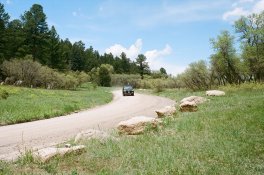Roger Cole
Member
If you are enlarging you are fitting the negative range into a print range.
In monochrome paper/resin you can get variable range contrast to capture most negatives the enlarger will have a colour filter control you dial to control.
But you may still want or need to dodge and burn locally and more generally.
An expert printer will take a difficult negative and straight print it for mid tones separated so they look good but frying and boot polishing the high and lows and then do 2nd print recovering the highs and lows same exposure as first... but burning and dodging.
I spend a week end with a box of prints all rejected...
This is the simplistic description...
Even a fair printer does this. You may be able to get highlights and shadows in a wide range scene to both print by using a soft paper grade, but it will look like crap because of the lack of separation in close values, "micro contrast" as it were. Choosing a paper grade to do that is fine for a contact proof to guide the final print, but for the final print choose a paper grade that gives good looking midtones (or whatever tones dominate in the case of a high or low key scene) and dodge/burn/flash/bleach/whatever you have to in order to fit the higher and lower values you need onto that grade. I emphasize "you need" because sometimes it does no harm, and may even help, to let highlights or, particularly, shadows go blank. A lot of very successful available light shots have black, detail-less shadows, for example, and that's fine. Such scenes often have the important areas lighted and others in darkness anyway. It all depends on the photo.












 When I get my permanent darkroom with running water built out later in the year (hopefully) I expect to use it a LOT more.
When I get my permanent darkroom with running water built out later in the year (hopefully) I expect to use it a LOT more.